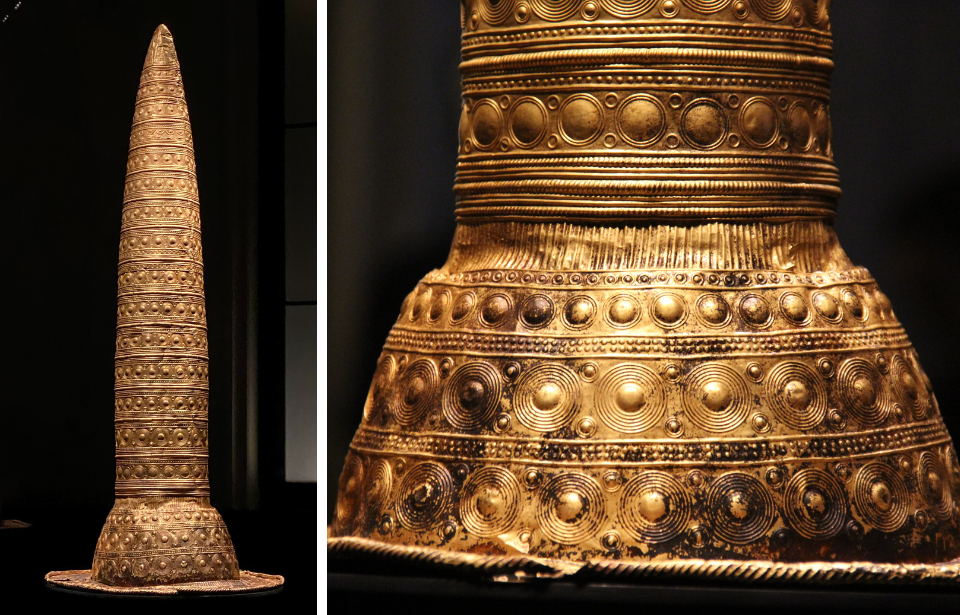The Berlin Gold Hat, an ancient artifact shrouded in mystery, captivates historians and archaeologists alike. This conical hat, crafted from a single sheet of gold, dates back to the Bronze Age and is believed to have served a significant ceremonial purpose. Its intricate decorations and symbols suggest a deep connection to the astronomical knowledge of the time, possibly used as a complex calendar system. The craftsmanship and precision involved in creating the artifact highlight the advanced metallurgical skills of its creators, leaving us in awe of their ingenuity.
Discovered in the 19th century, the hat has since been a subject of extensive study and fascination. Scholars have debated its exact function, with theories ranging from a religious artifact to a tool for astronomical observations. The hat’s detailed engravings are thought to encode information about lunar and solar cycles, showcasing the sophisticated understanding of celestial movements by ancient civilizations. As we continue to unravel the secrets of the Berlin Gold Hat, it stands as a testament to our ancestors’ rich cultural and scientific heritage, inviting us to explore the depths of human history.
The origins of the Berlin Gold Hat
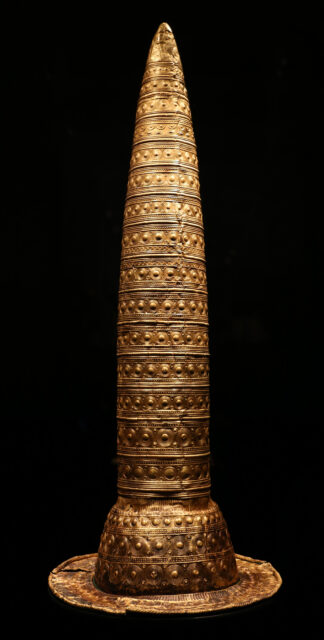
The Berlin Gold Hat, an extraordinary artifact from the Bronze Age, was acquired by the Berlin Museum für Vor- und Frühgeschichte in 1996. Unfortunately, it is unknown exactly when and where the artifact was discovered. However, it has provided historians and archaeologists with invaluable insights into the advanced knowledge and practices of Bronze Age societies.
The historical context surrounding the hat is equally fascinating. When it was crafted, around 1000 to 800 BCE, Europe underwent significant cultural and technological transformations. The hat’s detailed engravings indicate a deep understanding of astronomical cycles, which would have been crucial for agricultural societies relying on precise seasonal changes. It stands as a testament to the ingenuity and sophistication of our ancestors, offering a glimpse into a world where science and ritual were deeply intertwined.
The craftsmanship and materials used in making it
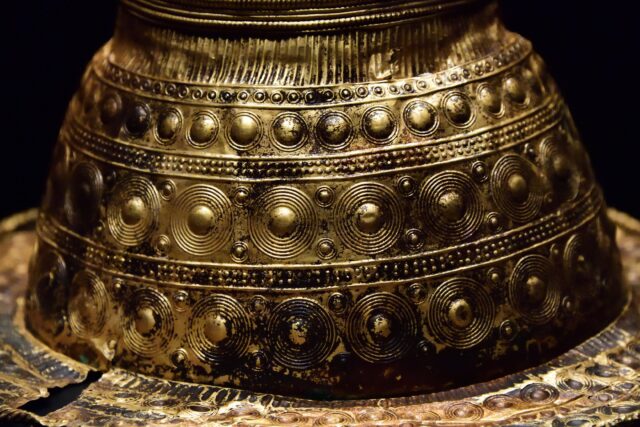
The Berlin Gold Hat stands as a testament to the exceptional craftsmanship of the Bronze Age. Crafted from a single sheet of gold, the hat is intricately decorated with a series of concentric circles, dots, and other geometric patterns. The precision with which these patterns were executed suggests that the artisans possessed advanced skills and a deep understanding of both metallurgy and astronomy.
The materials used in the artifact further highlight its significance. The gold, likely sourced from river deposits, was meticulously hammered and shaped into a thin yet durable sheet. This process would have required technical expertise and a significant amount of time and effort. The choice of gold, a material valued for its rarity and luster, underscores the hat’s importance, possibly indicating its use in ceremonial or ritualistic contexts. The combination of skilled craftsmanship and high-quality materials makes the Berlin Gold Hat a remarkable artifact, offering valuable insights into the technological and cultural achievements of its creators.
The Berlin Gold Hat’s symbolism and purpose
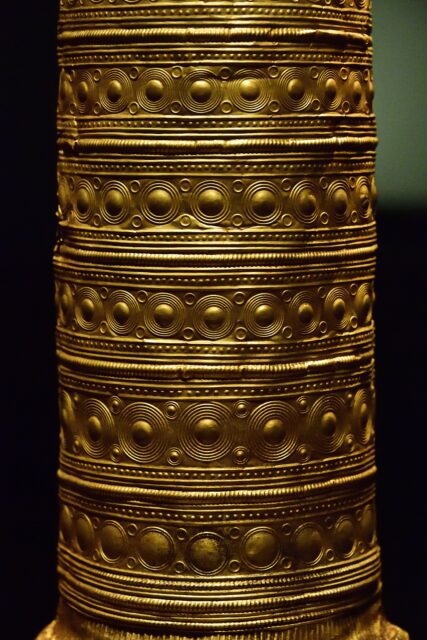
The artifact is believed to have held significant symbolic and practical purposes. Scholars propose that the hat served as a sophisticated calendar system used by ancient astronomers to track lunar and solar cycles. This theory is supported by the detailed patterns and symbols etched into the gold, which align with astronomical observations.
Beyond its practical applications, the Berlin Gold Hat likely held considerable cultural and religious significance. It may have served as part of important rituals, symbolizing a connection to the divine. This duality of purpose—both functional and symbolic—underscores the complexity and ingenuity of the societies that created and used such extraordinary artifacts.
Exhibitions and public display of the Berlin Gold Hat
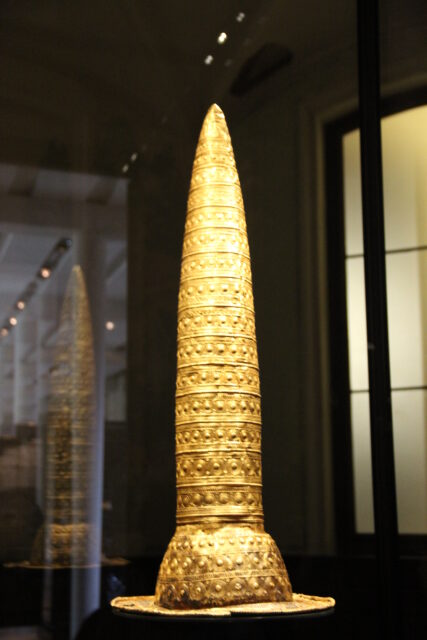
Since its discovery, the Berlin Gold Hat has captivated audiences, drawing crowds eager to glimpse this extraordinary artifact. Its intricate design and mysterious origins make it a centerpiece in any exhibition. In addition to its aesthetic appeal, the hat serves as an educational tool, providing insights into the astronomical knowledge of ancient civilizations. Curators often accompany the display with detailed information about the hat’s purpose and the era it represents, enriching the visitor experience.
The Berlin Gold Hat attracts history enthusiasts and engages those with an interest in early scientific achievements. Its intricate design and the detailed calendrical information it holds reveal a society deeply connected to artistic expression and scientific observation. This artifact not only highlights the technological advancements of its time but also offers a glimpse into the cultural and spiritual life of the people who created it.
More from us: Roald Dahl Hated Gene Wilder as Willy Wonka
Today, the Berlin Gold Hat continues to captivate historians, archaeologists, and the general public alike. Its discovery has sparked numerous studies and debates, enriching our understanding of ancient European civilizations. As a symbol of human ingenuity and curiosity, the Berlin Gold Hat remains a significant piece of our shared heritage, reminding us of the enduring legacy of our ancestors’ quest for knowledge and meaning.
Join The Vintage Newsletter community today and unlock a treasure trove of weekly curated content, exploring nostalgia, history, and fascinating facts from the past.
